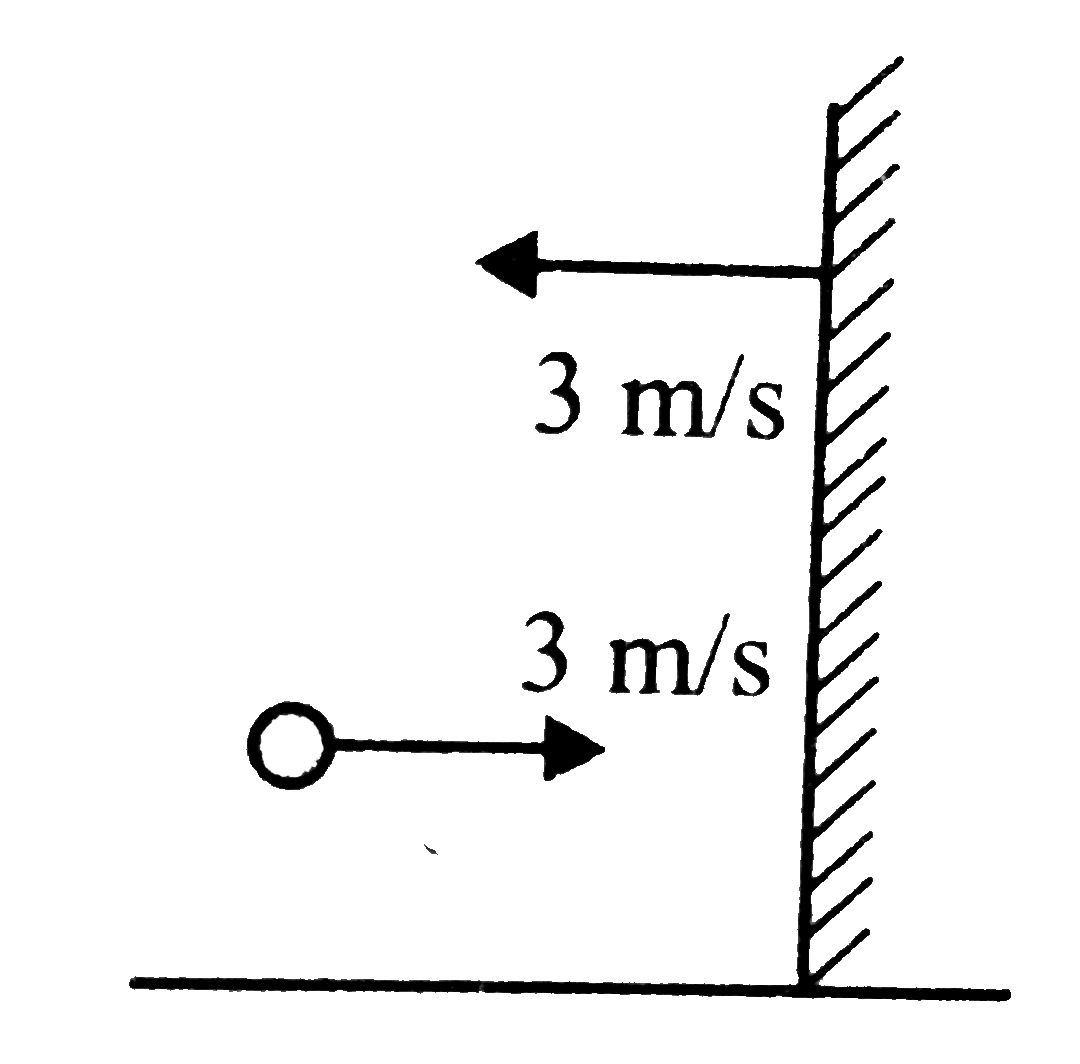A ball of mass 0⋅2 kg moving with a speed of 30 m/s strikes a bat returns in opposite direction with speed of 90m/s . Magnitude of change in momentu,m of ball will be
Zero
6 kg m/s
12 kg m/s
24 kg m/s
The correct Answer is:C
To find the magnitude of the change in momentum of the ball, we can follow these steps:
Step 1: Identify the mass and velocities
- Mass of the ball, m=0.2kg
- Initial velocity of the ball before striking the bat, v1=30m/s (in the positive direction)
- Final velocity of the ball after striking the bat, v2=−90m/s (in the opposite direction, hence negative)
Step 2: Calculate the initial momentum
The initial momentum (pi) of the ball can be calculated using the formula:
pi=m⋅v1
Substituting the values:
pi=0.2kg⋅30m/s=6kg m/s
Step 3: Calculate the final momentum
The final momentum (pf) of the ball after it strikes the bat can be calculated as:
pf=m⋅v2
Substituting the values:
pf=0.2kg⋅(−90m/s)=−18kg m/s
Step 4: Calculate the change in momentum
The change in momentum (Δp) is given by:
Δp=pf−pi
Substituting the values:
Δp=−18kg m/s−6kg m/s=−24kg m/s
Step 5: Find the magnitude of the change in momentum
The magnitude of the change in momentum is:
|Δp|=24kg m/s
Final Answer:
The magnitude of the change in momentum of the ball is 24kg m/s.
---
- Mass of the ball, m=0.2kg
- Initial velocity of the ball before striking the bat, v1=30m/s (in the positive direction)
- Final velocity of the ball after striking the bat, v2=−90m/s (in the opposite direction, hence negative)
The initial momentum (pi) of the ball can be calculated using the formula:
pi=m⋅v1
Substituting the values:
pi=0.2kg⋅30m/s=6kg m/s
The final momentum (pf) of the ball after it strikes the bat can be calculated as:
pf=m⋅v2
Substituting the values:
pf=0.2kg⋅(−90m/s)=−18kg m/s
The change in momentum (Δp) is given by:
Δp=pf−pi
Substituting the values:
Δp=−18kg m/s−6kg m/s=−24kg m/s
The magnitude of the change in momentum is:
|Δp|=24kg m/s
The magnitude of the change in momentum of the ball is 24kg m/s.
Topper's Solved these Questions
- LAWS OF MOTIONBOOK - AAKASH INSTITUTE ENGLISHCHAPTER - LAWS OF MOTIONEXERCISE - ASSIGNMENT ( SECTION -B) objective type questions (one option is correct)
59 Videos
- LAWS OF MOTIONBOOK - AAKASH INSTITUTE ENGLISHCHAPTER - LAWS OF MOTIONEXERCISE - ASSIGNMENT ( SECTION -C) objective type questions (More than one options are correct)
21 Videos
- LAWS OF MOTIONBOOK - AAKASH INSTITUTE ENGLISHCHAPTER - LAWS OF MOTIONEXERCISE - TRY YOURSELF
69 Videos
- KINETIC THEORYBOOK - AAKASH INSTITUTE ENGLISHCHAPTER - KINETIC THEORYEXERCISE - EXERCISE (ASSIGNMENT) SECTION - D Assertion - Reason Type Questions
10 Videos
- MAGNETISM AND MATTER BOOK - AAKASH INSTITUTE ENGLISHCHAPTER - MAGNETISM AND MATTER EXERCISE - ASSIGNMENT (SECTION D)
26 Videos
Similar Questions
A ball of mass 2kg moving with speed 5m/s collides directly with another ball of mass 3kg moving in the same direction with speed 4m/s. The coefficient of restitution is 2/3. Find the velocities of both ball after the collision.
View SolutionA ball of mass 3kg moving with a speed of 100 m/s, strikes a wall at an angle 60∘ (as shown in figure). The ball rebounds at the same speed and remains in contact with the wall for 0.2 s, the force exerted by the ball on the wall is

View SolutionThe following problems illustrate the effect of a time-dependent force of a large average magnitude which acts on a moving object only for a short duration. Such forces are called 'impulsive' forces. According to the impulse-momentum theorem, impulse delivered to a body is equal to the change of linear momentum of the body.
A ball of mass 250g is thrown with a speed of 30m/s. The ball strikes a bat and it is hit straight back along the same line at a speed of 50m/s. Variation of the interaction force, as long as the ball remains in contact with the bat, is as shown in Fig.

Maximum force exerted by the bat on the ball is
View SolutionA highly elastic ball moving at a speed of 3m/s approaches a wall moving towards it with a speed of 3m/s. After the collision. the speed of the ball will be

View SolutionA cricket ball of mass 100 g moving with a speed of 30ms−1 is brought to rest by a player in 0.03 s. Find the change in momentum of ball.
View SolutionA ball of mass 0.5kg moving with a velocity of 2m/s strikes a wall normally and bounces back with the same speed . If the time of contact between the ball and the wall is 1 millisecond , the average force exerted by the wall on the ball is
View SolutionA ball of mass 0.5kg moving with a velocity of 2m/s strikes a wall normally and bounces back with the same speed . If the time of contact between the ball and the wall is 1 millisecond , the average force exerted by the wall on the ball is
View SolutionA mass m with velocity u strikes a wall normally and returns with same speed. What is the magnitude of the change in momentum of the body when it returns.
View SolutionA ball of mass 50 g moving at a speed of 2.0 m/s strikes a plane surface at an angle of incidence 450. The ball is reflected by the plane at an equal angle of reflection with the same speed. Calculate (a). the magnitude of the change in momentum of the ball (b). the change in the magnitude of the mometum of the ball.
View SolutionA ball of mass 50 g moving at a speed of 2.0 m/s strikes a plane surface at an angle of incidence 450. The ball is reflected by the plane at equal angle of reflection with the same speed. Calculate a. the magnitude of the change in momentum of the ball b. the change in the magnitude of the momentum of the wall.
View Solution
